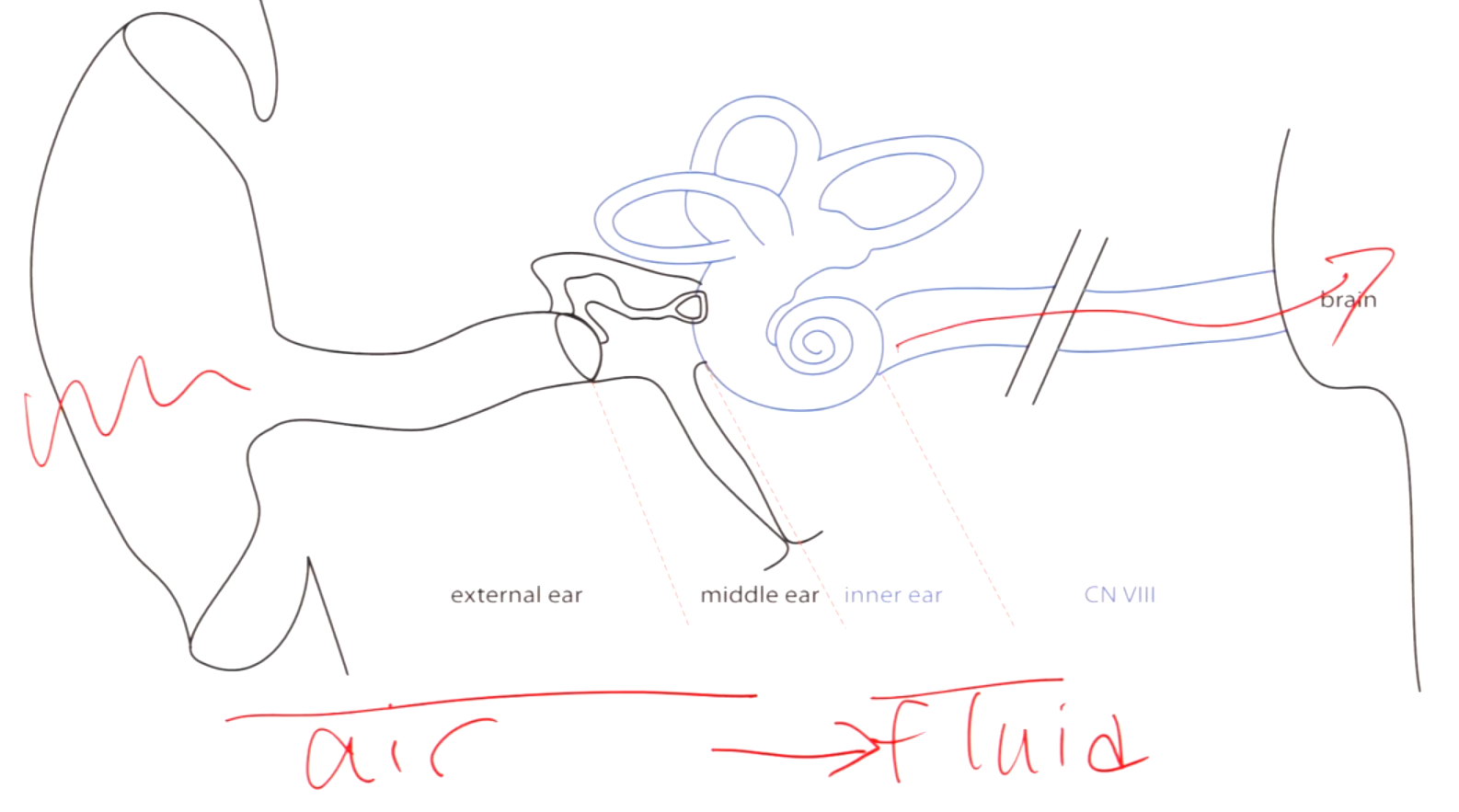 Introduction to Sound Waves
Introduction to Sound Waves
- Sound waves are waves of pressure.
- Two key components:
- Frequency (Hertz): number of cycles per second
- Speech: 250 Hz - 4000 Hz
- Lower frequencies: Bass sounds (e.g., contrabassoon)
- Higher frequencies: Treble sounds (e.g., piccolo)
- Intensity (decibels): perceived loudness
- 0 dB: Lowest detectable sound
- Conversational speech: 60 dB
- Modern world has many loud noises (e.g., traffic, leaf blowers)
- Frequency (Hertz): number of cycles per second
From Air to Fluid Waves
- The ear needs to convert air waves (external ear) to fluid waves (inner ear).
- External ear funnels sound waves.
- Middle ear acts like a drum, transmitting vibrations to the inner ear.
Auditory Pathway
- The cochlea (inner ear) filled with fluid receives the vibrations.
- An auditory nerve carries the information to the brain.
- Information from both ears goes to both sides of the brain (bilateral).
- Hearing loss is usually due to problems in the ear, not the brain.
Next Steps
- The lecture will explore the external ear, middle ear, and inner ear in more detail.
- We will learn how these parts work together for hearing and how hearing loss can occur.